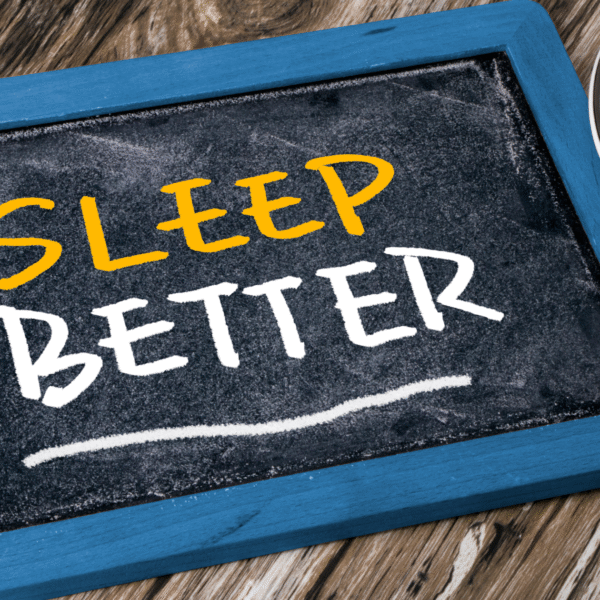
Sleep Tips for People Living with Chronic Pain
Living with chronic pain often means battling not just discomfort during the day, but also sleepless nights. Pain can interfere with falling asleep, staying asleep, and reaching the restorative stages of rest that the body needs for healing. Unfortunately, poor sleep can also make pain feel worse, creating a frustrating cycle.
The good news: with the right strategies, it is possible to improve sleep quality, even while living with chronic pain. Below are practical tips to help you create better sleep habits and support your overall well-being.
1. Create a Sleep-Friendly Environment
Your sleep environment has a significant impact on rest, especially if pain makes you sensitive to changes in light, sound, or temperature.
- Invest in a supportive mattress and pillows: Choose a mattress that supports your spine’s natural curve and helps reduce pressure on painful areas. Body pillows or wedge pillows can ease joint or back pain.
- Control the temperature: A slightly cool room (around 65°F/18°C) promotes sleep. For people with pain, breathable sheets and adjustable blankets can prevent discomfort from overheating.
- Reduce noise and light: Blackout curtains, white noise machines, or earplugs can block disturbances that interrupt sleep.
2. Stick to a Consistent Sleep Schedule
The body thrives on routine. Going to bed and waking up at the same time each day helps regulate your circadian rhythm. Even if pain makes sleep elusive at times, try to stay consistent with your schedule. This trains your brain to recognize sleep cues and makes falling asleep easier over time.
3. Practice Relaxation Before Bed
Many people with chronic pain find it hard to relax at night because discomfort draws attention. A calming routine before bedtime can reduce stress and signal to the body that it’s time to wind down.
- Deep breathing or guided meditation: These practices calm the nervous system and help redirect focus away from pain.
- Gentle stretches or yoga: Light, pain-friendly stretches may release muscle tension and prepare the body for rest.
- Warm bath or shower: Heat therapy can ease stiff joints and muscles while promoting relaxation.
4. Manage Daytime Naps
Short naps can help with fatigue, but long or late naps may disrupt nighttime sleep. If you need to nap, aim for 20–30 minutes in the early afternoon. This refreshes you without interfering with bedtime.
5. Be Mindful of Caffeine and Food Choices
What you eat and drink in the evening matters.
- Limit caffeine: Coffee, tea, chocolate, and even some pain medications contain caffeine. Stop consuming it at least six hours before bed.
- Avoid heavy meals late at night: Large, spicy, or fatty meals can cause discomfort or reflux, making it harder to sleep.
- Consider a light snack: A small serving of complex carbs and protein, such as whole-grain crackers with cheese, can prevent hunger from waking you.
6. Optimize Your Pain Management Routine
Working with your doctor to time pain medication properly can help you sleep more soundly. For example, some long-acting medications can be taken before bedtime to reduce overnight pain flare-ups. Non-drug strategies such as heat packs, TENS units, or relaxation therapy may also help ease pain before bed.
7. Limit Screen Time Before Bed
Phones, tablets, and TVs emit blue light that suppresses melatonin, the hormone that regulates sleep. Try shutting down screens at least one hour before bedtime. If you must use a device, consider blue light–blocking glasses or night-mode settings.
8. Try Cognitive Behavioral Therapy for Insomnia (CBT-I)
CBT-I is a highly effective, evidence-based treatment that addresses both sleep habits and unhelpful thought patterns about sleep. It can be especially beneficial for people with chronic pain, as it helps break the cycle of worrying about restlessness and pain at night.
9. Stay Active During the Day
Physical activity—when done at a safe, pain-friendly level—improves both sleep quality and pain levels. Gentle walking, swimming, or stretching increases circulation, boosts mood, and helps regulate your sleep-wake cycle. Just avoid exercising too close to bedtime, as it can be stimulating.
10. Keep a Sleep and Pain Journal
Tracking your sleep habits, pain levels, and daily activities can reveal patterns. For instance, you might notice that certain foods, stress, or activities worsen sleep, while gentle exercise or stretching helps. Share this journal with your healthcare provider for tailored strategies.
11. Consider Professional Support
If sleep problems persist despite making lifestyle changes, it may be time to seek professional help. Sleep specialists can conduct studies to uncover issues such as sleep apnea, which often co-occurs with chronic pain. Pain specialists can also adjust your treatment plan to better support restful sleep.
Finding Balance: Sleep as a Part of Pain Management
Improving sleep doesn’t mean eliminating pain completely. Instead, it’s about creating an environment and routine that support your body’s natural rhythms while minimizing discomfort. Even small improvements—such as waking less often, falling asleep faster, or feeling more refreshed—can have a big impact on daily function and pain levels.
If you live with chronic pain, know that better sleep is possible. With the right combination of environment changes, relaxation practices, and professional support, you can restore balance and give your body the rest it needs to heal.
Leave a reply


